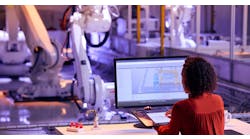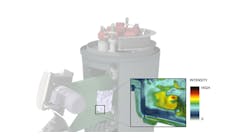For many foundries and diecasters, melting and pouring metal into molds is the easy part of their jobs. Doing it efficiently is slightly harder, but training and experience prepare them to work through the difficulties of time and temperature. One dimension of metalcasting that confounds even some of the brightest minds is information flow: How to capture the right details, how to understand them, and how to apply that knowledge.
“Technology evolves. That’s a fact,” according to Matt Gacek, vice president of business development for B&L Information Systems, who was speaking about the go-live for four foundries adopting B&L’s Odyssey ERP — but his point has wider meaning in the realm of managing metalcasting processes. Keeping information technology moving in step with metalcasting operations has become the specialty for a handful of IT developers (B&L Info is just one.)
Having clarified enterprise resource planning for metalcasting operations — these ERPs are tuned to the specific needs of metalcasting management, accounting, sales, production, and quality control — the challenge for these developers now is to refine their platforms as information processing and network technology evolve. The arrival of Cloud-based platforms in the past decade may be the most obvious example of this, but ERP developers consistently issue program updates and new versions of their platforms. Recently, B&L issued a new version of Odyssey, 4.7 MR1, that introduces browser-based Web User Interface (UI). This “purely browser-based interface” gives wider functionality and mobility to users, and “fits with B&L’s overall cloud-computing strategy,” according to CEO Philip Laney.
But, while the users move about freely and continue to have wide accessibility, the information continues to move in its own directions, and that creates another imperative for the foundry operation.
Stainless Foundry & Engineering Inc. in Milwaukee has sand casting and investment casting capability, along with finish machining services, and it ships nearly 4 million pounds of finished casting annually. Those products range from exceptionally small parts (“grams”, Stainless Foundry noted) to designs weighing nearly 1.5 tons. Note, too, it is pouring various steel, alloy steel, and stainless steel alloys, and its customer list is extensive. It supplies products to manufacturers of valves, pumps, chemical and petrochemical processing equipment, nuclear energy parts, pulp-and-paper processing systems, pharmaceutical manufacturers, food and dairy processers, metering and instrumentation devices, and military programs.
In short, there are large and small bits of information flowing back and forth, into and out from Stainless Foundry’s operations, for internal references and customer reports. Capturing and reporting the information is the job for B&L’s Odyssey ERP, but there was another dimension to the foundry’s information challenge: making the information flow more efficiently among the operators and managers of the business.
Specifically, Stainless Foundry need greater visibility into order processing, and faster order/contract reviews. It also wanted to improve the flow of work orders between different foundry departments (sales to scheduling, for example), and it wanted to reduce the costs associated with handling all that paper. Paper? Naturally, even in this high-tech age a manufacturing operation has to retrieve invoices, make and deliver copies of documents, update records, etc. Storing documents is another, critical factor for cost and efficiency.
“Once a customer order came in, there were a lot of steps required before it was entered into our Odyssey ERP,” stated Steve Cooke, Stainless Foundry’s vice president of sales and marketing. In short, even with all the problems solved by adopting a metalcasting-focused ERP, the foundry still had an information management dilemma.
“Engineering, Quality, Production and Customer Service (departments) were all involved in the order review process,” he continued, “and each area might have responsibilities from validating pricing, setting up new customers, providing samples – all based on the kind of order received, and from whom. This meant a lot of room for error, shuffling paper between departments, lots of emails; overall an inefficient manual process.”
Resolving this involved selecting a “document management and imaging methodology,” but the choice had to work reliably with the Odyssey ERP, capture incoming e-mail orders, and coordinate itself with the established complex order process.
Stainless Foundry’s choice was IntelliChief, a “paperless process management” provider that accomplished each of the required factors, with an acceptable level of upfront configuration, and also provided ongoing maintenance and user support.
According to Cooke, IntelliChief’s paperless platform helped Stainless Foundry to reduce its production lead-time by 50%. “This significant improvement also provides benefits of substantially fewer lost orders, enhanced visibility into the orders-to-cash process, and ultimately fewer customer complaints,” he said.
Functionally, orders are uploaded to the IntelliChief platform, validated against Odyssey, and routed to the respective parties in a structured electronic package. What had been done manually (moving paper through various departments) is done in real time.
Also, IntelliChief’s order-to-cash processing provides access to an entire order packet directly from Stainless Foundry’s ERP screens, which saves time and improves customer service. The paperless platform coordinates customer order documents regardless of how they have been received (mail, fax, email, fax) and the workflow helps to automate order processing, including custom interfaces for new customer setup, expired pricing, credit checks, and engineering approvals.
With all this data flow, it’s important to mention, like B&L’s new UI, IntelliChief makes life easier for the human entities in the production process. “IntelliChief’s user training enabled everyone interacting with the system to be comfortable with its usage quickly,” according to Cooke. “That helped achieve our system ROI within a year.”










